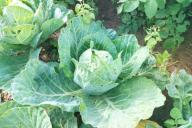This is a fungal disease that causes fruit rot, "monilial burn," which leads to the death of flowers and branches, says agronomist and landscape designer Anastasia Kovrizhnykh .
The fungus overwinters in damaged tree bark, which is carried there by the wind and dirty paws of insects. And in the spring it spreads at cosmic speed.
The infected parts of the tree remain infectious all summer.
If spring and summer were marked by heavy rains and fogs during the flowering of stone fruits, consider that this disease can affect your trees with 98% probability. Unless, of course, you have not treated them, not to mention the resistance of specific varieties.
What to do?
1. In spring after flowering and in autumn, trim the affected branches with a healthy section of wood +10 cm, if possible.

2. Burn the branches and fruits.
Do not leave them on the branches for the winter, remove and burn them. Or in the spring. But it is better in the fall. In the spring it is already too late in principle, unless you manage to get to positive temperatures of more than +5 °C.
3. Treat with Bordeaux mixture/copper-containing preparations ("Horus", "Skor", etc.) before flowering and immediately after it.
4. Whitewash. (Whitewash for trees containing fungicides.)
5. In autumn, repeat the treatment after harvesting the fruits.
Note! Look carefully at the label of the preparation, it says at what temperature it works (when the treatment will be effective), the range is from +3° to +15°.








